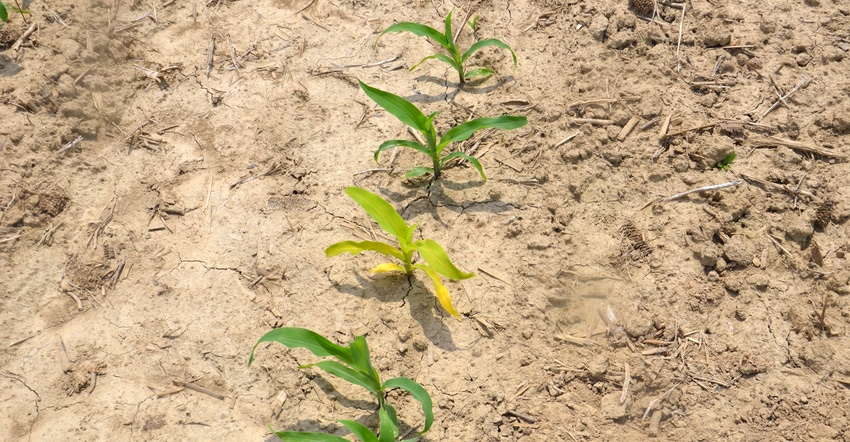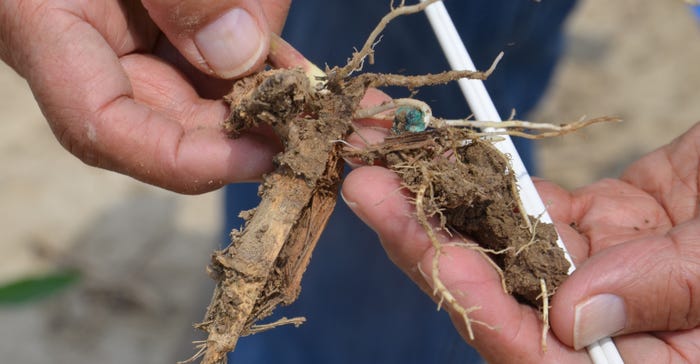
You’re scouting your cornfield and find something that doesn’t look right. Dave Nanda says there are steps you can take on your own to find clues as to what may be occurring. Once you exhaust those steps, if you haven’t found an answer, it may be time to call your seed dealer or agronomist for help.
“If I see an off-color plant in a cornfield, I want to find the cause,” says Nanda, director of genetics for Seed Genetics Direct, Jeffersonville, Ohio, sponsor of Corn Watch ’21.
Related: Return to warmer temps aids germination
It may require sacrificing a few plants, but it’s important to determine the cause while symptoms are still visible, Nanda says. In some cases, it’s a one-off occurrence that may not affect other plants. However, in other cases, you might find an issue worth correcting, either yet this season or by adjusting plans for 2022.
Scouting example
Here is an example from Nanda’s visit to the Corn Watch ’21 field when corn was at the four-leaf stage. He noticed one off-color plant in a row of otherwise healthy, dark green plants.
1. Recognize the problem. “It was just one plant, but I am a curious person,” Nanda says. “I wanted to know what was affecting it.”
2. Make visual observations. Nanda noted that the plant was at the same growth stage and same height as other plants. The only difference was that it was yellowish-green instead of dark green.
3. Dig the plant. Nanda had a shovel and large trowel. To make sure he captured all the roots without disturbing them, he dug around and under the plant.
4. Pay attention to soil conditions. If the soil comes out in chunks or if there are layers, crusting or soil compaction may be involved. Because a couple of heavy rains had occurred since planting, there was some crusting, but it didn’t appear to be enough to affect rooting.
5. Examine the roots. Nanda brushed away the soil and examined root structure. For the most part, it appeared normal. “Then I noticed that something besides roots came up with the plant,” he explains. “A fairly large piece of cornstalk residue was attached to a main root. In fact, roots grew through the stalk.
“My best guess is that the seed happened to be placed very near the large piece of cornstalk residue, and roots grew into it,” Nanda says. “When they did, they weren’t finding nutrients the plant needed. Some roots were in normal soil, but apparently there was a temporary shortage of nutrients.”
Looking more closely at the plant, Nanda noticed that newer leaves were showing more green color. “The plant probably would have grown out of it as all roots returned to normal soil,” he observes. “It was just an unusual situation.”

6. Other steps. In this case, Nanda was satisfied with his conclusion. If it wasn’t as clear-cut, he could have dug a healthy plant to compare roots.
“In cases where there are multiple plants affected, you could pull tissue samples from affected plants versus healthy plants to compare,” he says. When big areas of a field are affected, consider pulling a soil sample from both affected and normal areas of the field.
About the Author(s)
You May Also Like




